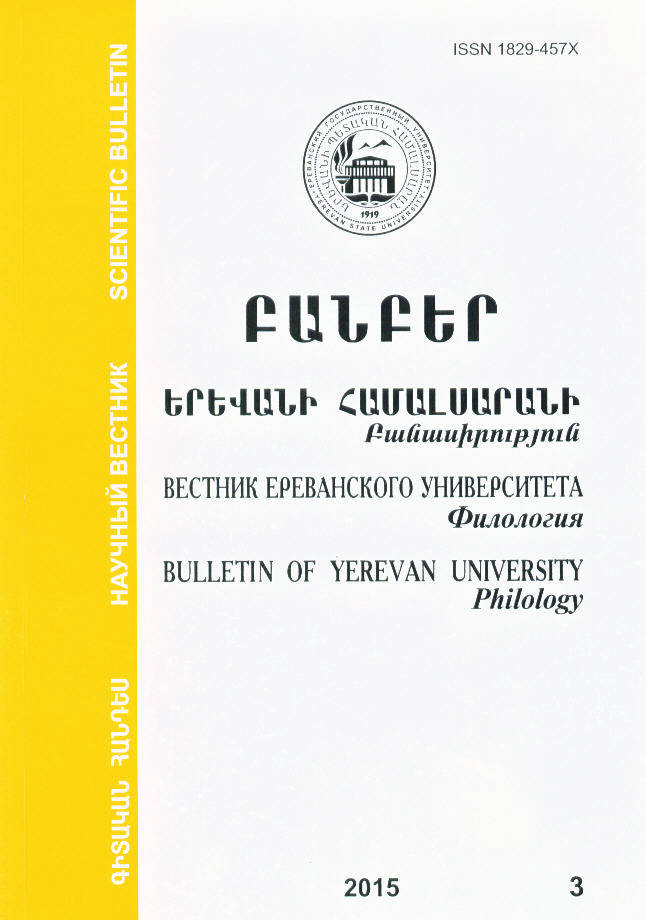Typology of the Grammatical Categories of Transitiveness and the Voice of the Verb
DOI:
https://doi.org/10.46991/BYSU:B/2015.6.3.037Keywords:
transitivity, grammatical category of voice, valency, valency, causative, monovalent verbs of middle voice, voice transformations, zero transition, causative-structured, middlevoice- structuredAbstract
The grammatical categories of transitiveness and the verbal voice are in essence subordinate to the category of valency. The position has been clearly presented by L. Tenier in his “Basics of Structural Syntax”. In the Armenian linguistics, beginning with M. Abeghyan, transitiveness is attributed to the verbs of the causative and active voice, the rest being considered intransitive. The rationale is the direction of the action from the subject (towards an object). In reality, however, the action may pass both from the subject to another object and from the latter to the subject (also, from the subject to itself). With such an approach to the issue, L. Tenier considers only the univalent verbs of the middle voice as intransitive. Based on this proposition, we typify transitions according to the voice of the verb. Thus, for causative and active verbs the transition is outbound, for passive verbs the transition is inbound, for the reflexive voice the transition is automotive, for the verbs in the reciprocal voice the transition
is cross-over, while, for those in the middle voice, there is a zero transition. To the active and passive types of sentences, as determined by the voice of the main verb, we hereby add two more types: causative-structured and middle-voice-structured. This is not discretionary, rather, it is necessitated by the gradual transition of structures. In the Armenian language, the causative structure, if its main causative verb is formed from the active voice, transforms into the active structure and, if its main causative verb is formed from the middle voice, transforms into the middle-voice structure. However, a transformation from the causative to the passive structure is possible only by an intermediary transformation into the active structure.
Downloads
Published
How to Cite
Issue
Section
License
Copyright (c) 2021 Bulletin of Yerevan University

This work is licensed under a Creative Commons Attribution-NonCommercial 4.0 International License.

